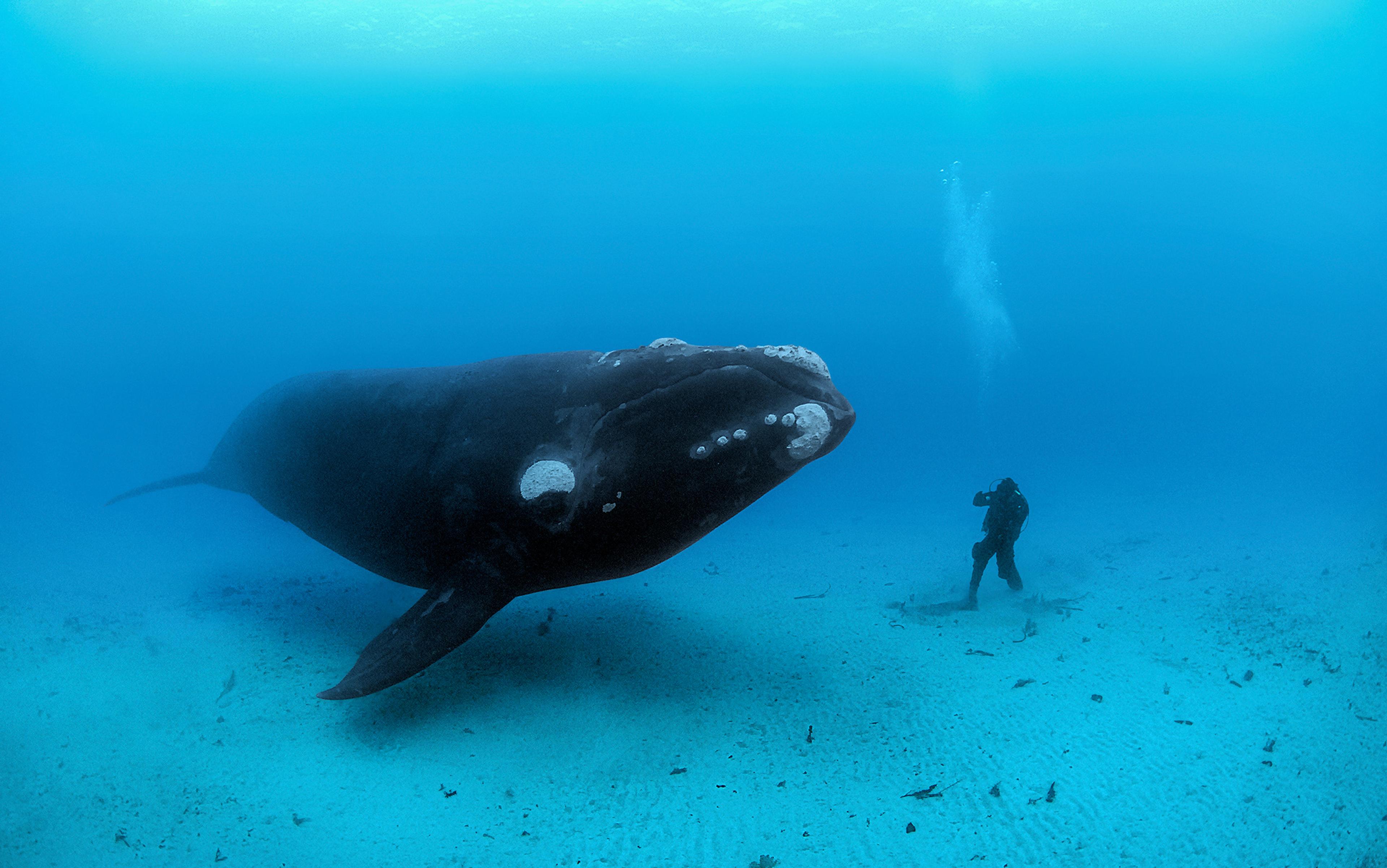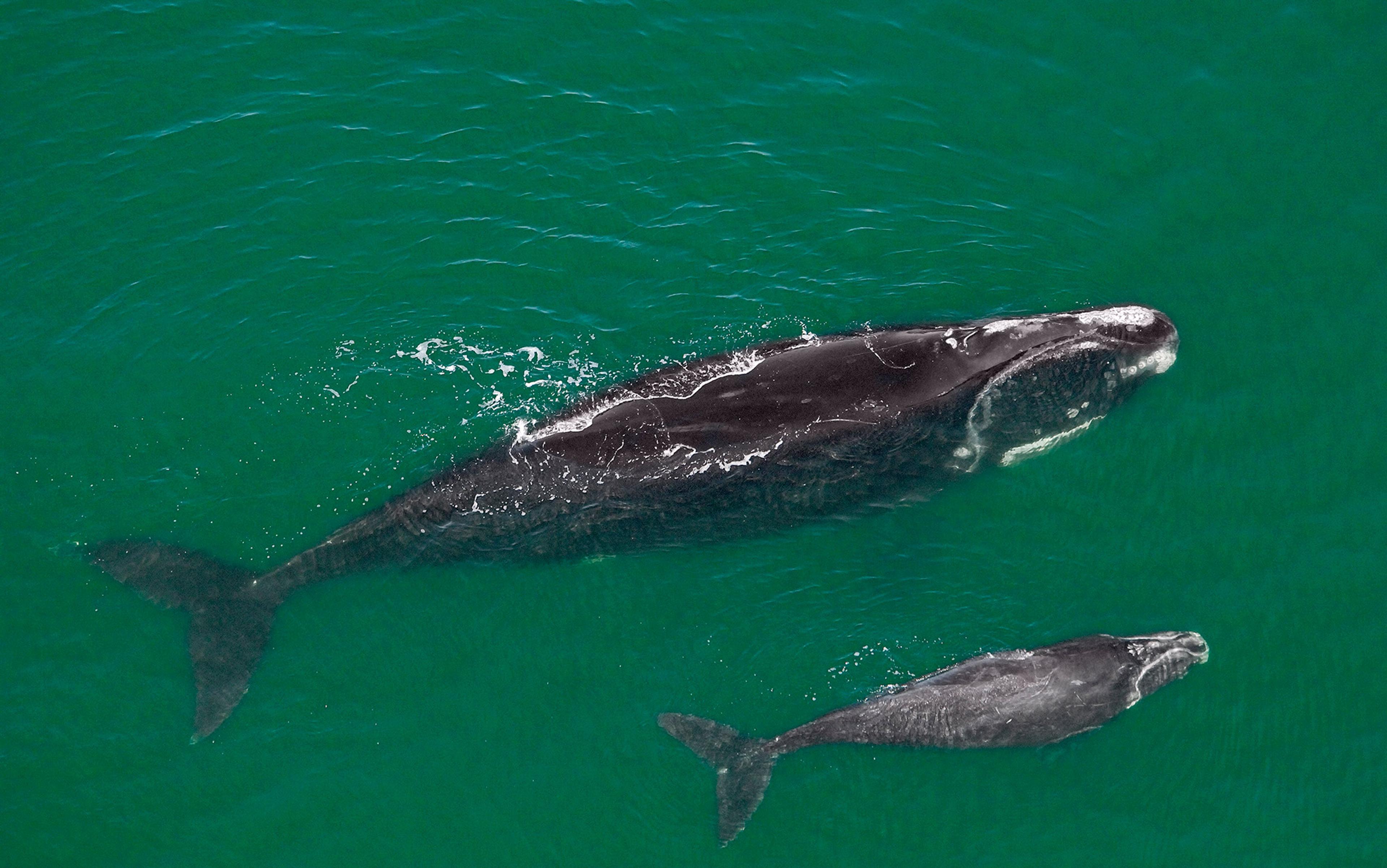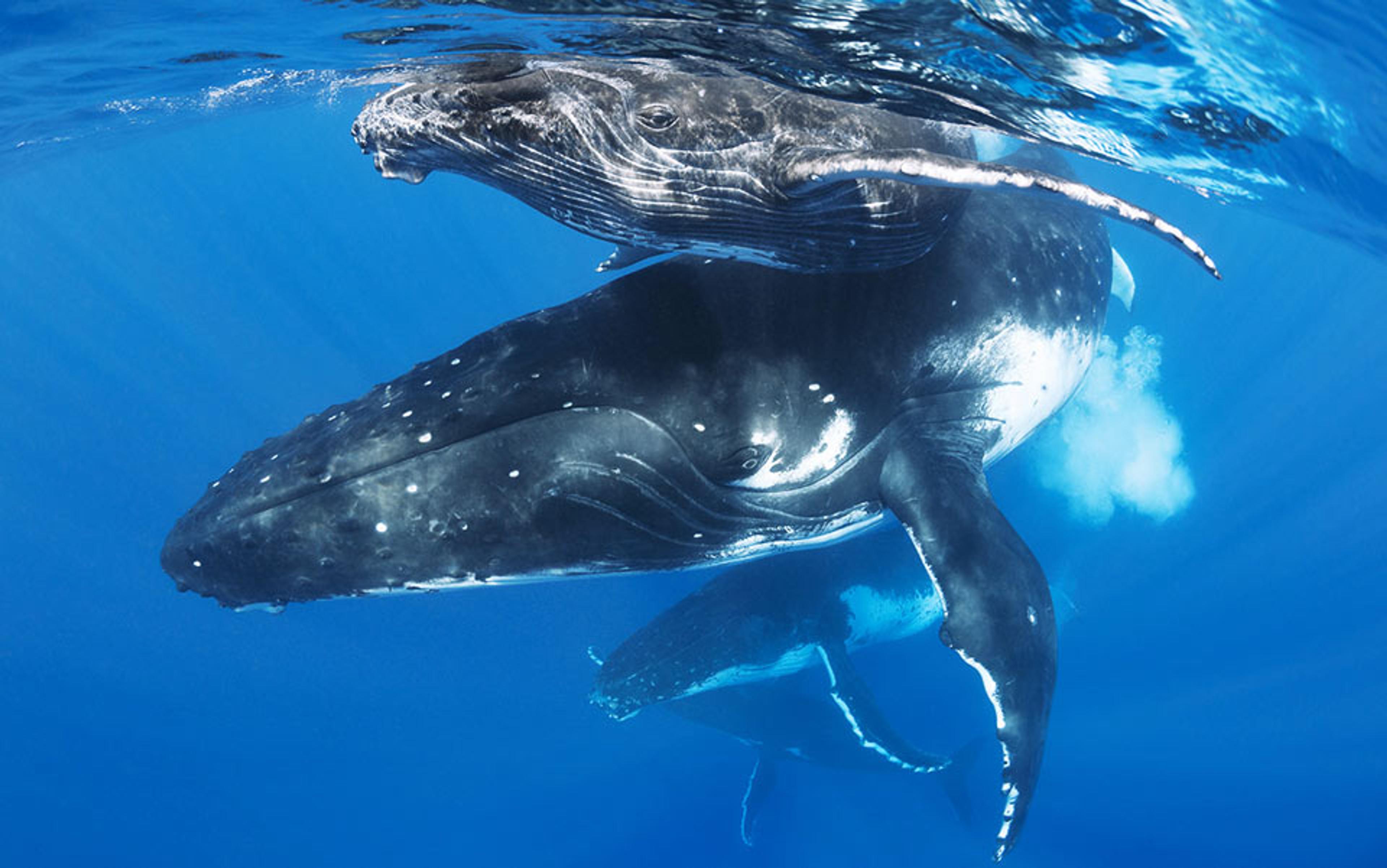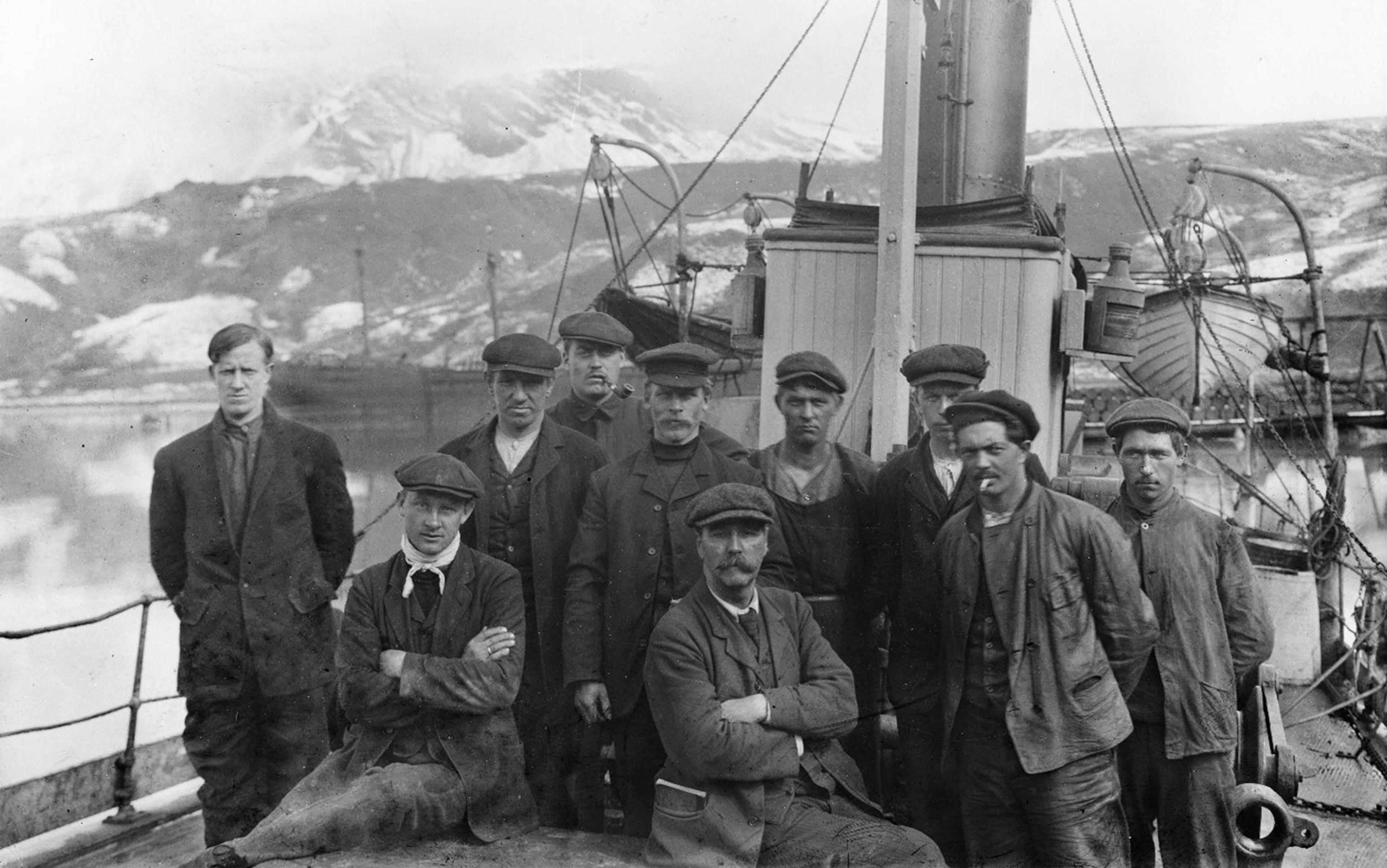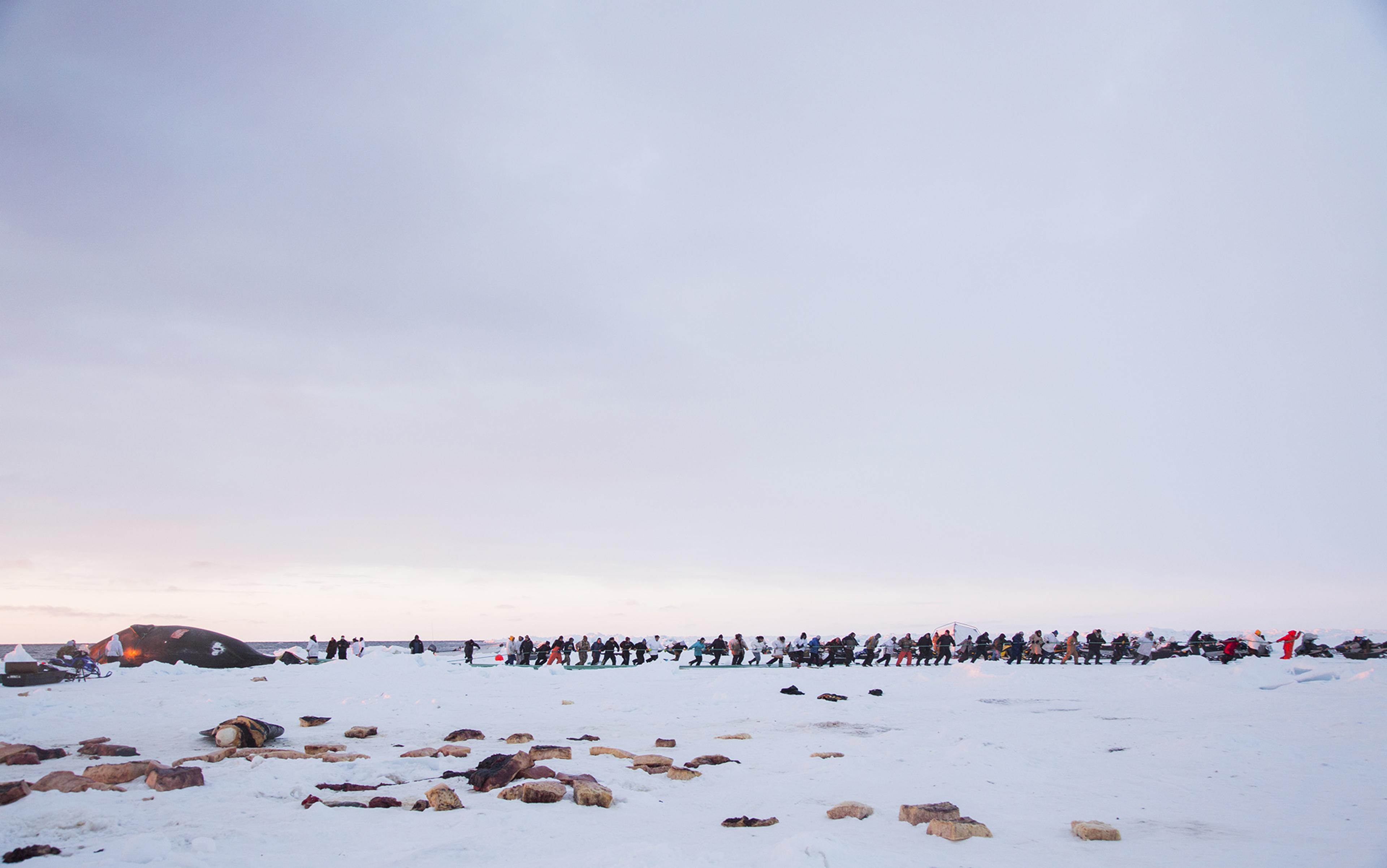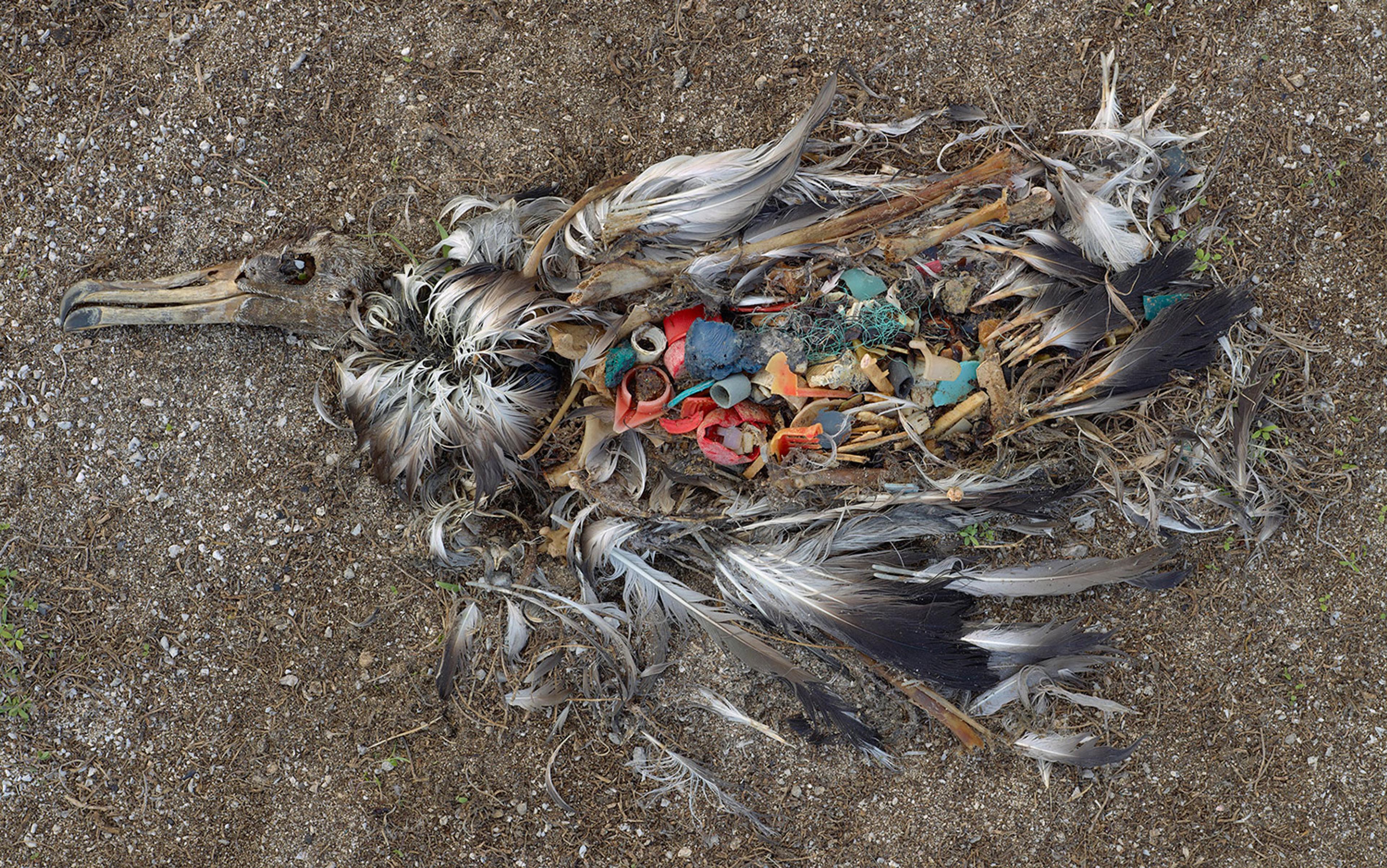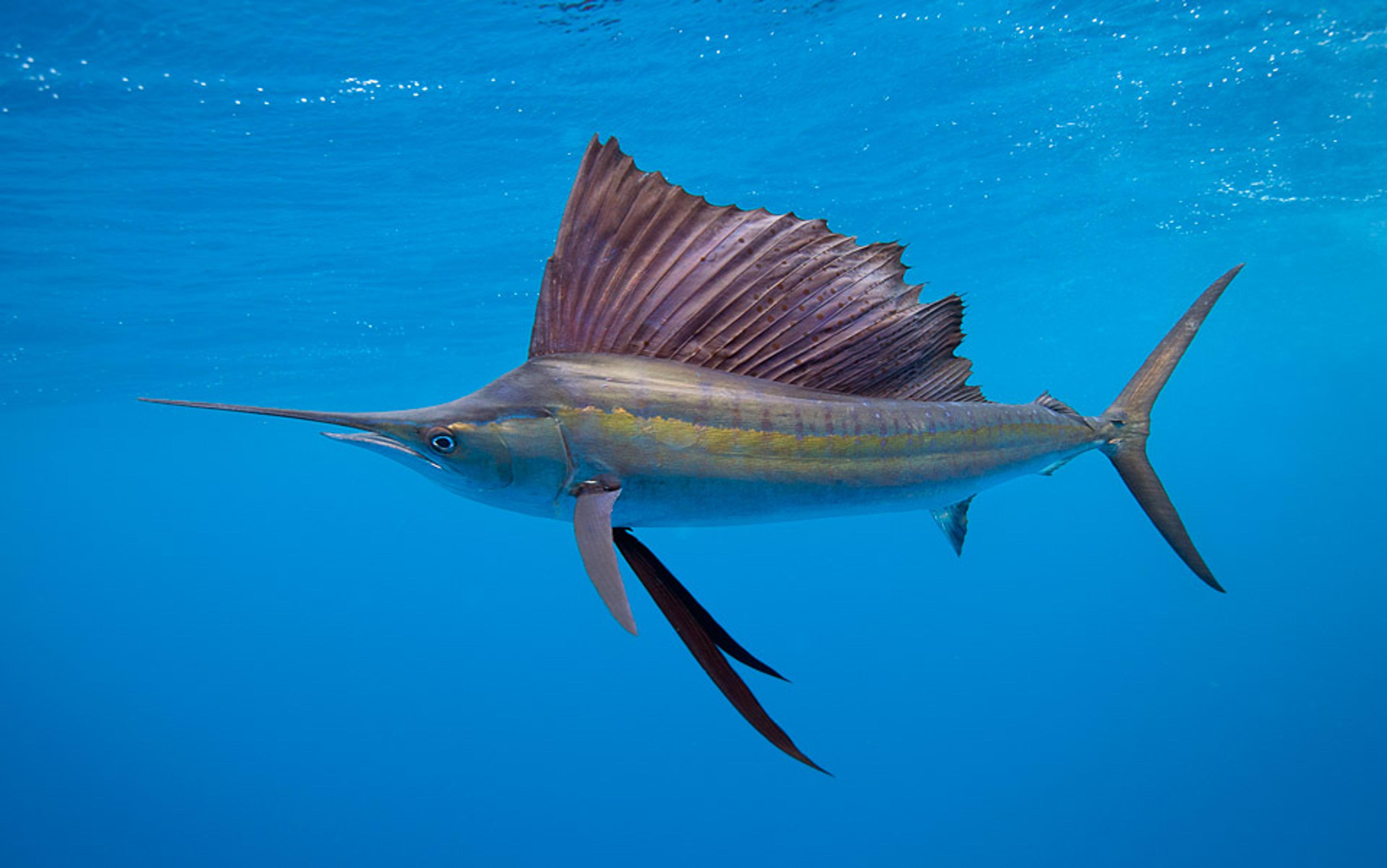Late spring, Cape Cod Bay; dark blue water, pale blue sky. Skipper the ship’s dog barked loudly over the side of the research vessel, Shearwater. ‘That’s a big rabbit, Skipper!’ joked Brigid McKenna, one of the two young women on the top deck of the small boat where we had spent the past seven hours staring out to sea. Finally, she and Skipper and I saw what we had traversed the entire bay to find: the distinctive, V-shaped blow of Eubalaena glacialis, the North Atlantic right whale — one of the world’s most endangered animals. It’s a bit like seeing a dinosaur.
The right whale’s story is emblematic of all great whales. Hunted to near-extinction in the 17th, 18th and 19th centuries by a sequence of nations from the Basques to the British and the Dutch, it was so-called because it was the right whale to catch: its blubbery carcass did not sink once killed but remained floating, conveniently, at the surface. That rightness proved fatal. By the early 1900s, its numbers were so reduced that it became the first whale to receive protection, under the aegis of the League of Nations, in 1935. By the late 20th century, it seemed doomed by a dwindling gene pool and the ever-increasing depredations of human activity, as well as by its own predilection for feeding in urban seas, close to one of the world’s busiest shipping lanes. Ship-strike, entanglement in fishing gear, and the more insidious effects of chemical pollution, anthropogenic noise and warmer, more acidic seas all combine to make this perhaps the most hapless of cetacean victims of human progress.
And yet, slowly, surprisingly, against all the odds, the right whale is making a comeback. Scientists decline to trumpet this advance. Conservationists remain wary, for fear it will undermine the still fragile nature of the recovery and allow a complacent public to assume the battle has been won. But the numbers are clear, and they show a definite increase — from just 350 individuals, when Dr Charles ‘Stormy’ Mayo first started his studies here in Cape Cod in the 1970s, to 500 animals now.
Well, 516, to be exact — an average increase of 2.5 per cent per annum, a statistic that comes courtesy of aerial surveys and photo-identification. Mayo is director of right whale research at the prestigious (but financially threatened) Provincetown Centre for Coastal Studies and, ever the cautious scientist, his optimism is tempered. ‘Five hundred whales make you want to sing,’ he told me, ‘but you have to hold your breath when you do.’
The Pilgrim Fathers recorded that the whales were so numerous that they could virtually stride across the bay on their broad backs
The metaphor is apt, given the great maw of this magnificent animal. It is remarkable that something so huge should depend on minute zooplankton, the copepods and krill that constitute its diet. A single right whale, which can weigh up to 90 tons and measure 60 feet in length, needs to eat a ton of these grain-sized crustaceans every day to sustain its vast bulk. It does this by straining its prey through a vast arched mouth, big enough to garage a small car. Yawning wide, it moves slowly through fields of zooplankton like a living lawnmower, its pliable plates of baleen (the whalebone that once cinched in fashionable Victorian waists) straining its food like rice in a sieve. Herman Melville celebrated this spectacle in his novel Moby-Dick (1851), in a chapter titled ‘Brit’ — surely the only passage in a work of classic fiction dedicated to zooplankton. Melville describes the whales ‘making a strange, grassy, cutting sound’, like cows — for all that ‘their vast black forms looked more like lifeless masses of rock’.
It is here off Cape Cod that right whales find their food on their return in early spring. Many of them spend the winter off Florida and Georgia, where the females calve. But the erratic weather of 2013 has seen a new shift in their foraging. ‘I’ve never seen a year like it,’ Dr ‘Stormy’ Mayo remarked. He has been studying these animals since 1976. Coming from a long line of New Englanders — Mayo’s family has been living on the Cape since 1650 — he knows the wild fluctuations of the whales’ behaviour better than most.
Hence today’s cruise, in high seas, across the bay. The route was remarkably similar to that taken by the Pilgrim Fathers who arrived here on the Mayflower four centuries earlier, and who recorded that the whales were so numerous that they could virtually stride across the bay on their broad backs.
Up close, right whales look prehistoric, with an indefinable series of lumps crowned with a crusted ‘bonnet’ — callosities that grow in unique patterns on a whale’s head, approximately where hair sprouts on a human head. These are the tools of Mayo’s trade: the patterns are distinctive enough to let researchers identify individual animals. As Shearwater transected the bay, the researchers Christy Hudak and Beth Larson wielded a plankton net, trawling for the telltale count of Calanus finmarchicus. The little plastic sample jars swirled with pink clouds of the zooplankton, like soup. In an attempt to empathise with our subjects, I fished out a fingerful of copepods and tasted them. A faint sea-salt oiliness lingered on the tongue. Not exactly a bouillabaisse, but it sustains leviathans.
On deck, Lauren Bamford and Brigid recorded the blows that were erupting all around us. I clambered up to join the two women. Every few minutes, a new whale popped up, its crusty head and sea-slick body glinting in the sun. ‘They’re acting cryptically,’ said Brigid. ‘Sub-surface feeding.’ For some reason, their prey had sunk to three or five metres below the surface. Why? That was up to Stormy and his team to discover.
Bowheads hunted by the Inuit in Alaska were found to have ancient harpoons embedded in their blubber of a type that hadn’t been used for more than a century
Though there were many whales out there — and that afternoon we cruised through a herd of up to 80 animals — they made for frustrating viewing. You had to put them together in your imagination, like a whalish jigsaw puzzle, creating a composite creature: a pair of sleek flukes here, an arched head there. Then, suddenly, in the distance, an animal would launch itself entirely out of the water — breaching improbably into the sun, as if in defiant celebration of its survival.
Survival is the word. These whales might not be the smartest of all great whales — the sperm whale, with the world’s biggest brain, can probably lay claim to that. They lack the dimension-busting length of the blue whale. Yet it is becoming increasingly clear that the rights could outlive all other whales. That they might, in fact, be one of the oldest living animals on Earth.
There was extraordinary excitement last year when the centre’s observers discovered a strange new interloper in the midst of the right whale herd. This individual, spotted by the aerial surveyors, lacked the callosities of the other whales. Photographs revealed that the anomalous visitor was in fact a bowhead whale — a habitué of the Arctic, thousands of miles to the north, and a close cousin to the right whale.
What was it doing here? No one really knows. But its unusual presence was recently underlined by equally sensational news from the other end of the Atlantic: the appearance, off Walvis Bay in Namibia, of a Pacific grey whale — extinct in this ocean for three centuries and never before recorded in the southern hemisphere. This lone, and presumably lonely, whale accomplished an astonishing 5,000-mile journey to reach the coast of southern Africa.
All these cetaceans turning up where they shouldn’t be: are they recovering old migratory routes, abandoned during the whaling years? Or are they suffering new anthropogenic threats, to add to the chemical and aural pollution we pump into their environment? As ever in science, potential answers propose only more questions. But an even more intriguing link between right whales and bowheads is beginning to emerge.
The animals I watched in Cape Cod Bay — only tens of miles from the historic city of Boston — could be older than American republic itself
In the 1990s, bowheads hunted by the Inuit in Alaska were found to have ancient harpoons embedded in their blubber of a type that hadn’t been used for more than a century. Their presence indicated that the native peoples’ ancestors had attempted to hunt the same individual animals hundreds of years ago. Other evidence took the story even further back. Scientific tests on the harpoons proved them to be 235 years old, while other analyses, using amino acids found in whales eyes, confirmed these extraordinary tallies. Reasoning that it is unlikely that these specimens were the most ancient of the species, scientists hypothesise, with reasonable certainty, that bowheads can live up to 300 years, perhaps even older.
And since the bowhead is so closely related to the right whale, which it resembles in all but its lack of callosities and slightly larger size, there is a newly emerging view among scientists such as Mayo and Dr John Wise, of the University of Southern Maine, that the right whale might enjoy similar longevity. The animals I watched in Cape Cod Bay only tens of miles from the historic city of Boston could predate the American republic itself.
The discoveries do not end there. Earlier this year, the bowhead was found to have a 12-foot long organ in its lower jaw, composed of much the same spongelike tissue as a penis. The appendage swells with blood to regulate the whale’s temperature (oddly enough, blubber is such an effective insulator that whales have trouble keeping cool even in polar seas). This organ, catchily named Corpus Cavernosum Maxillaris, also boasts highly sensitive nerve endings. The scientist who discovered it, Alexander Werth, professor of biology at Hampden Sydney College in Virginia, suggests that these might be used to sense how much food there is in the water and how much the animal is swallowing — a kind of built-in calorie-counter, albeit in the form of a 12-foot penis. It is thought that the right whale possesses a modified Corpus, too — just more proof that, although apparently cumbersome and adipose, these animals are highly sensitive.
One morning, grounded by inclement weather out at sea, I cycled to the shore on the outermost end of the cape. I had to wade through sand to get there, breaking the salty crust that winter had laid over summer dunes. I passed the lighthouse that I’d seen from far away, and for the last few hundred yards I had to abandon my bike and trudge between stumps of dormant marram grass that snatched at my heels.
I thought of Guglielmo Marconi testing his sound waves on this coastline in 1903, and his belief that the same ether on which he broadcast his messages across the ocean might also carry the drowning cries of long-dead men. As I crested the last dune, the view fell away before me and the sea unrolled like a painted strip. I might have been the first person to discover this beach — just as the Pilgrims thought they had discovered it four centuries ago. The tide was on its way out, leaving a wide stretch of damp sand on which a huge flock of gulls was feeding.
As I descended into this natural arena, the sea birds took to the air, a thousand white wings rising like a curtain. And then I saw, just a few yards out into the water, an impossible arrangement of black triangles and humps. Moving restlessly through the water, this way and that, was a ‘SAG’ — a surface active group of right whales. Here was a sight beyond all spectacle or expectation — and all the more powerful for being experienced alone, and for the accumulated history that these animals bore on their broad backs.
The whales wove through one another’s paths, sometimes diving down, moving, as we humans seldom do, in three dimensions, fully occupying their world. They took no notice of the watcher on the sand as they curled around each other in what amounted to an extended act of communal foreplay. (Right whale males possess the largest testes of any animal, and the female can even admit more than one right whale penis at the same time.) As I watched, they seemed to stroke each other with their flukes and fins, as if in reassurance or celebration of their physical survival. Fecund yet endangered, immensely old yet frolicsome, the right whale slyly withholds its secrets, only gradually revealing its remarkable qualities to us. It is a living reminder of how little we know, and of how much we have already lost.
To hear Benedict Cumberbatch reading ‘Brit’ from Moby-Dick, go to mobydickbigread.com/chapter-58-brit/
